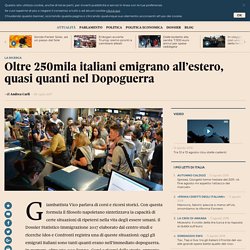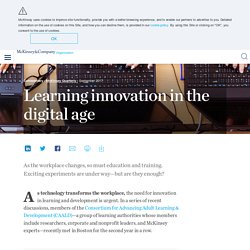

New global data reveal education technologys impact on learning. Five facts about student loans. Americans owe about $1.5 trillion on their student loans–more than they owe on their credit cards.

The increase in total student debt, stories of families struggling with six-figure loans, and the response of politicians to anxiety about student debt among young voters have turned student debt into a high-profile issue. To inform that conversation, here are five facts about student loans drawn from an event – Student loans: A look at the evidence – hosted by the Hutchins Center on Fiscal and Monetary Policy at Brookings. 1.
Six percent of borrowers owe a third of all the outstanding debt. A very small fraction of all student loan borrowers have very large loans. 2. Out of all households with student debt, only 26 percent are headed by an individual with a graduate degree. 3. Borrowers with graduate degrees have the lowest default rates despite accounting for about half of all student debt. 4. 5. Seven essential elements of a lifelong learning mind set. Mckinsey.com Learning innovation in the digital age. AdultlearninginItaly en. Learning adult system. Why we need to rethink education in the artificial intelligence age.
GTCI 2018 report. Analytics in education: How colleges and universities can transform outcomes. Many college and university leaders remain unsure of how to incorporate analytics into their operations.

What really works? Leaders in most higher-education institutions generally understand that using advanced analytics can significantly transform the way they work by enabling new ways to engage current and prospective students, increase student enrollment, improve student retention and completion rates, and even boost faculty productivity and research. However, many leaders of colleges and universities remain unsure of how to incorporate analytics into their operations and achieve intended outcomes and improvements. What really works?
Is it a commitment to new talent, technologies, or operating models? To answer these questions, we interviewed more than a dozen senior leaders at colleges and universities known for their transformations through analytics. Understanding the challenges Sidebar Advanced analytics use cases Being overly focused on external compliance. Deploying best practices. Oltre 250mila italiani emigrano all’estero, quasi quanti nel Dopoguerra. Giambattista Vico parlava di corsi e ricorsi storici.

Con questa formula il filosofo napoletano sintetizzava la capacità di certe situazioni di ripetersi nella vita degli essere umani. Il Dossier Statistico Immigrazione 2017 elaborato dal centro studi e ricerche Idos e Confronti registra una di queste situazioni: oggi gli emigrati italiani sono tanti quanti erano nell’immediato dopoguerra. In numero, oltre 250.000 l'anno. Corsi e ricorsi della storia, appunto. Prima il calo poi la crisi del 2008 e l’inversione di tendenzaL’emigrazione degli italiani all'estero, dopo gli intensi movimenti degli anni '50 e '60, è andato ridimensionandosi negli anni '70 e fortemente riducendosi nei tre decenni successivi, fino a collocarsi al di sotto delle 40.000 unità annue.
La fuga dei cervelliA emigrare - sottolinea il report - sono sempre più persone giovani con un livello di istruzione superiore. . © Riproduzione riservata. AI & learning. Ricerca scientifica, l'Europa la sta trascurando ed è un problema, ecco perché. La ricerca scientifica di base ha un ruolo cruciale per l’innovazione tecnologica e lo sviluppo economico.

Questa, infatti, pur studiando problemi ritenuti dal senso comune, lontani da ogni possibile applicazione pratica, ha introdotto nella storia, anche quella recente, scoperte rivoluzionarie che sono usate ogni giorno da ognuno di noi e che sono state il carburante dello sviluppo economico. Ad esempio, il motore di ricerca di Google funziona grazie al lavoro del matematico russo Andrei Markov negli anni ’20 del XX secolo, mentre lo smartphone è stato sviluppato in seguito alle scoperte nella fisica dei nano-materiali avvenute una trentina di anni fa.
Come si sono sviluppate queste importanti scoperte e, soprattutto, come sono state finanziate? Learning innovation in the digital age. As the workplace changes, so must education and training.

Exciting experiments are under way—but are they enough? As technology transforms the workplace, the need for innovation in learning and development is urgent. In a series of recent discussions, members of the Consortium for Advancing Adult Learning & Development (CAALD)—a group of learning authorities whose members include researchers, corporate and nonprofit leaders, and McKinsey experts—recently met in Boston for the second year in a row. In a series of discussions, CAALD explored what is, and isn’t, being done to innovate in these fields.
Many CAALD experts were skeptical about the ability of universities to respond rapidly enough. Here we present edited excerpts of these experts’ reflections, which build on related CAALD discussions exploring artificial intelligence and the future of work. Inertia in higher education Misaligned incentives “What are your outcomes?” “No.